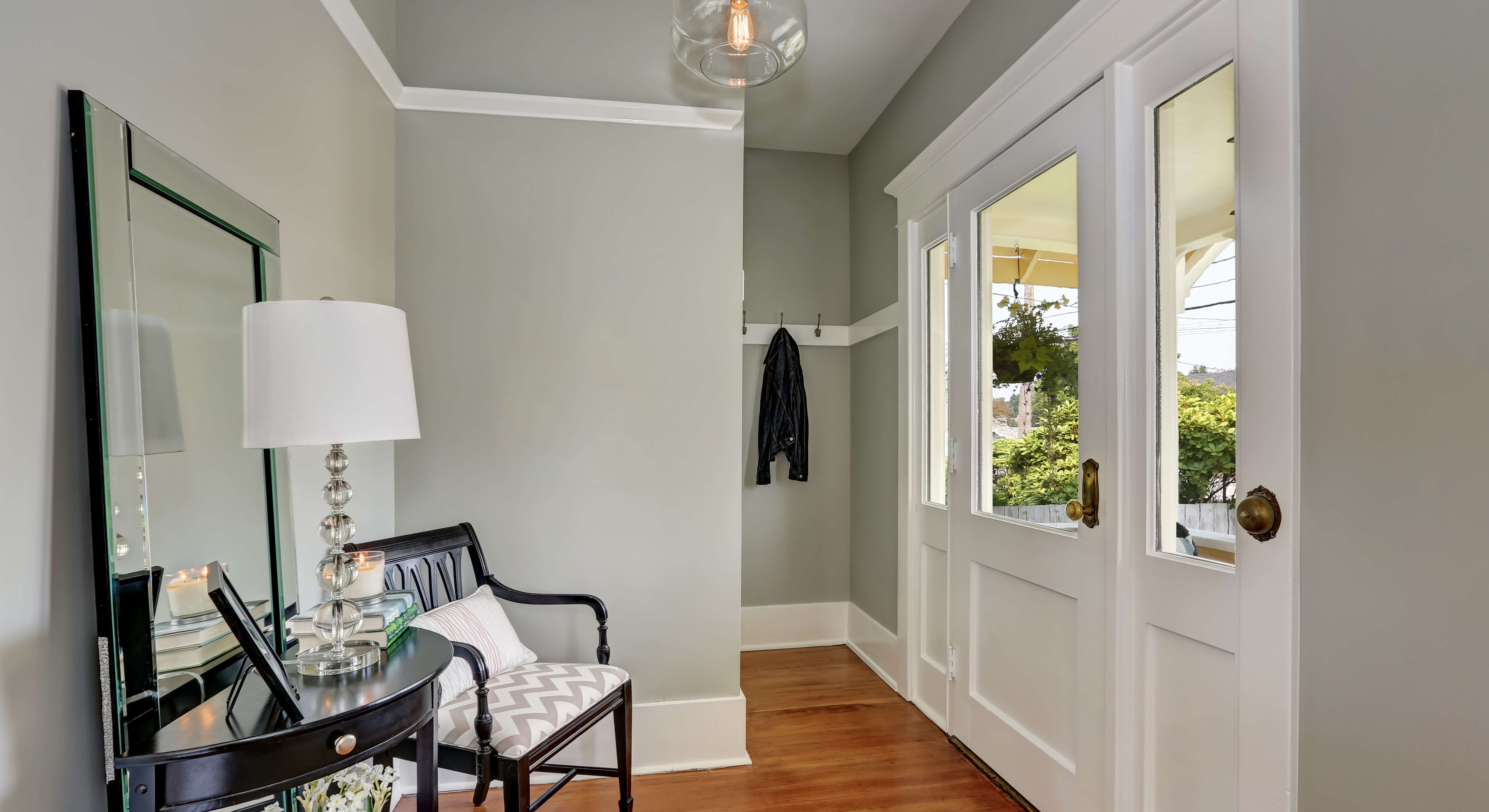
Whether your house is grand or bijoux, creating a welcoming entryway will ensure your guests are always guaranteed a warm reception. And even if you face the challenge of a small space, it needn’t restrict you from making a big impact.
Your entryway is similar to your porch, where guests form their first impression of your home’s curb appeal. It’s a place where they start to gain a concept of your style, taste, and, more importantly, how welcome they feel. But it’s not just a place for guests to feel welcome, it’s the first room you enter, and needs to act as a sanctuary between you and the outside world.
With a few interior design tricks and careful planning, you can have a welcoming entryway with a grandness all of its own.
1. Think functionality
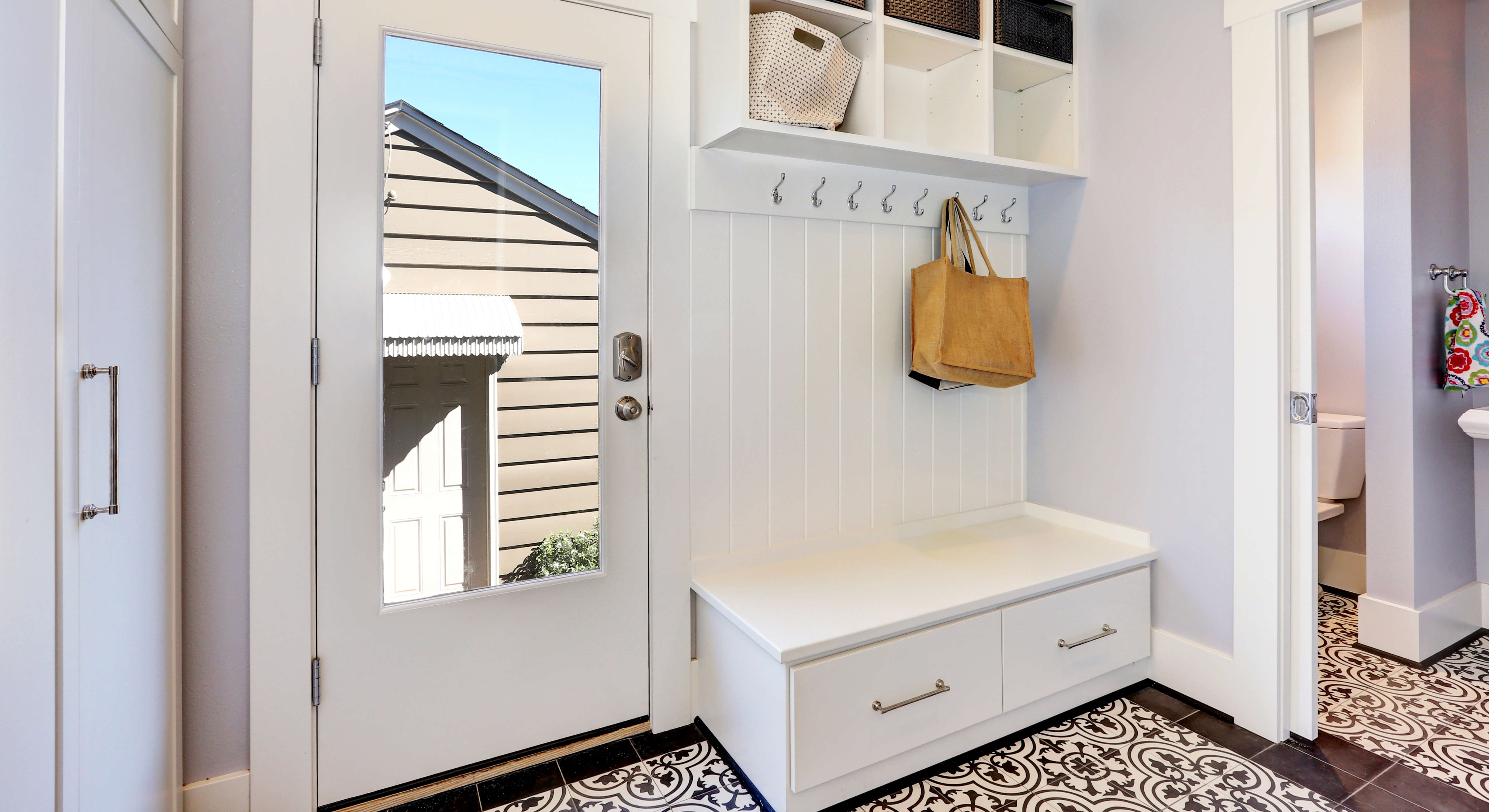
Before you get carried away looking through paint samples, start by putting pen to paper. Consider what functions the entryway needs to fulfil. Is it purely as a welcoming point to create a bold statement? Does it need to provide storage space for coats and shoes? Will the flooring have to endure heavy wear from dirty boots?
Once you’ve determined your entryway’s key purposes, you can make choices that reflect what you need to achieve.
2. Declutter your entryway
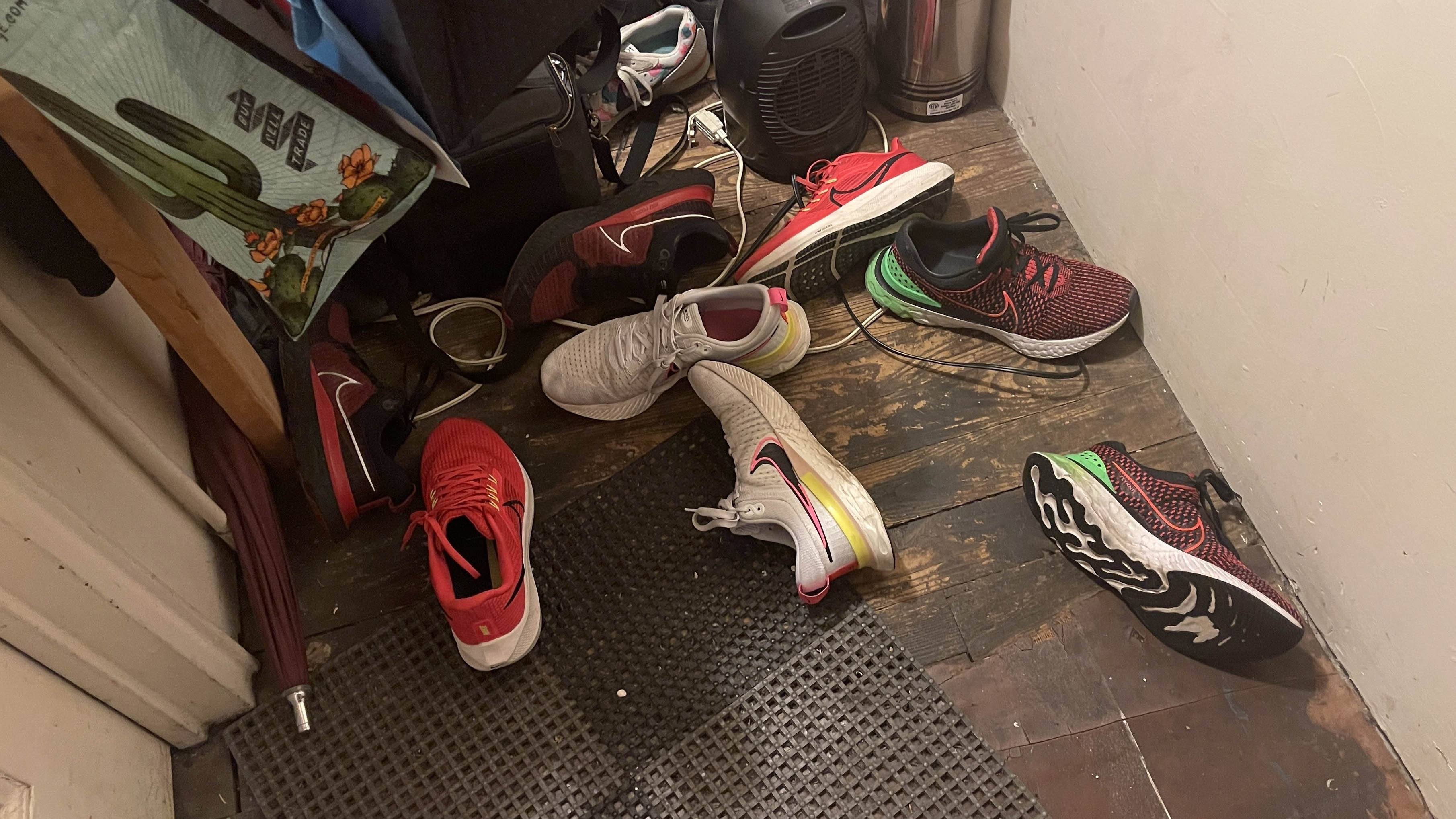
One of the easiest ways to create a welcoming entryway is to clear the clutter. A jumble of car keys and miscellaneous items look untidy, while shoes and bags cast on the floor are a trip hazard. These items can remain in the entryway and organized into dedicated spaces and storage areas. We’ll have more on this later. You’ll be surprised how decluttering your home can make an instant difference.
3. Reflect light
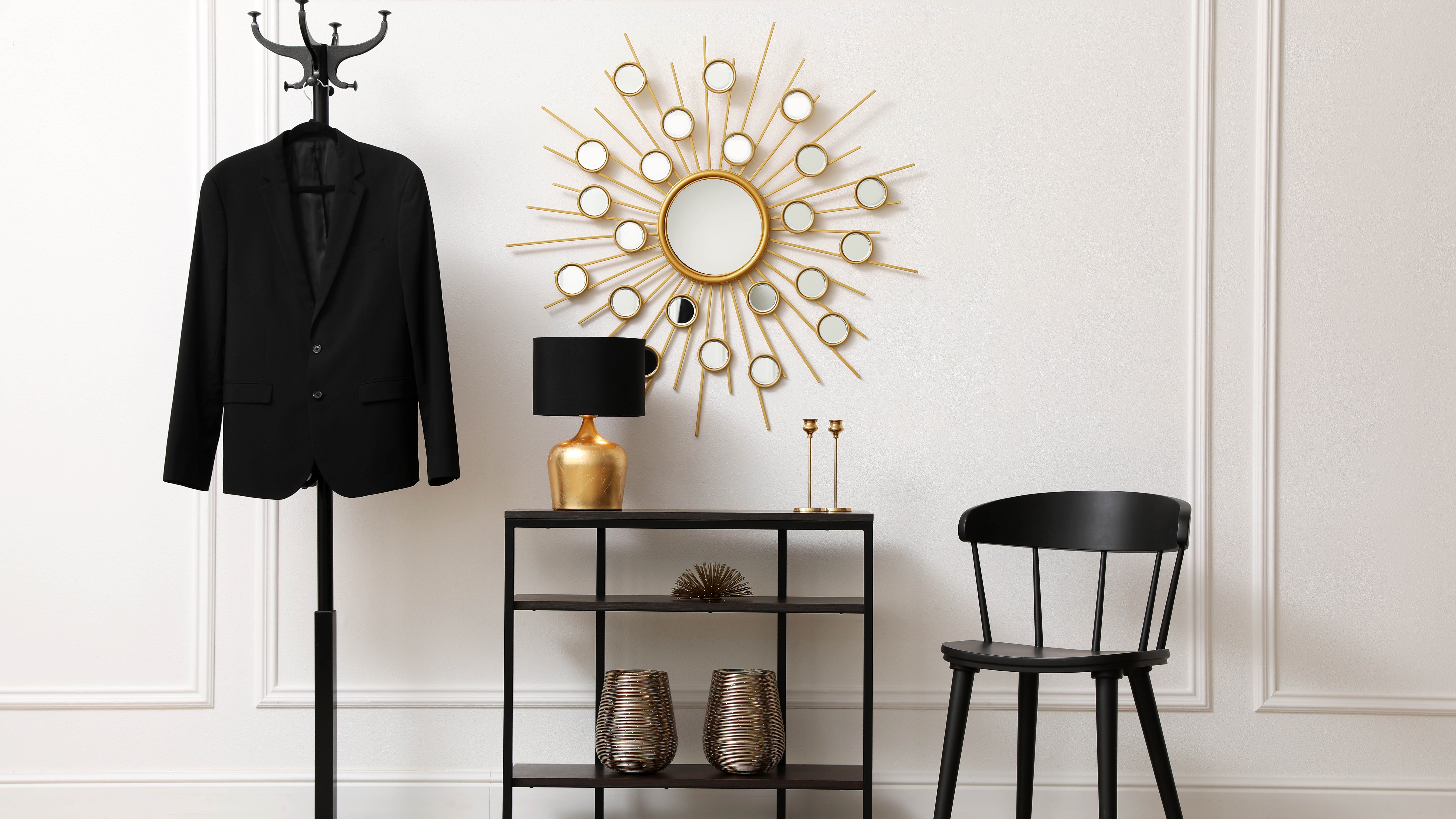
Small entryways can be on the dark side, which doesn’t make for a cheery welcome. Bringing in more light can turn a gloomy space into a happier place. Mirrors play a dual role in reflecting light and opening up a room to make it appear larger.
Depending on how your walls and doorways sit, the best place to position a mirror will be opposite your front door or side window, as it captures the direct natural light. If this doesn’t work for your layout, don’t fret. Placing a mirror in your entryway, wherever it is positioned, will make the room appear bigger and brighter.
Why not stop at one mirror? A whole wall of mirrors will provide the wow factor to impress guests. And while we mention impressions, mirrors also have practical functions in entryways. You and your guests can check your appearance before facing the world.
4. Go bold with lighting
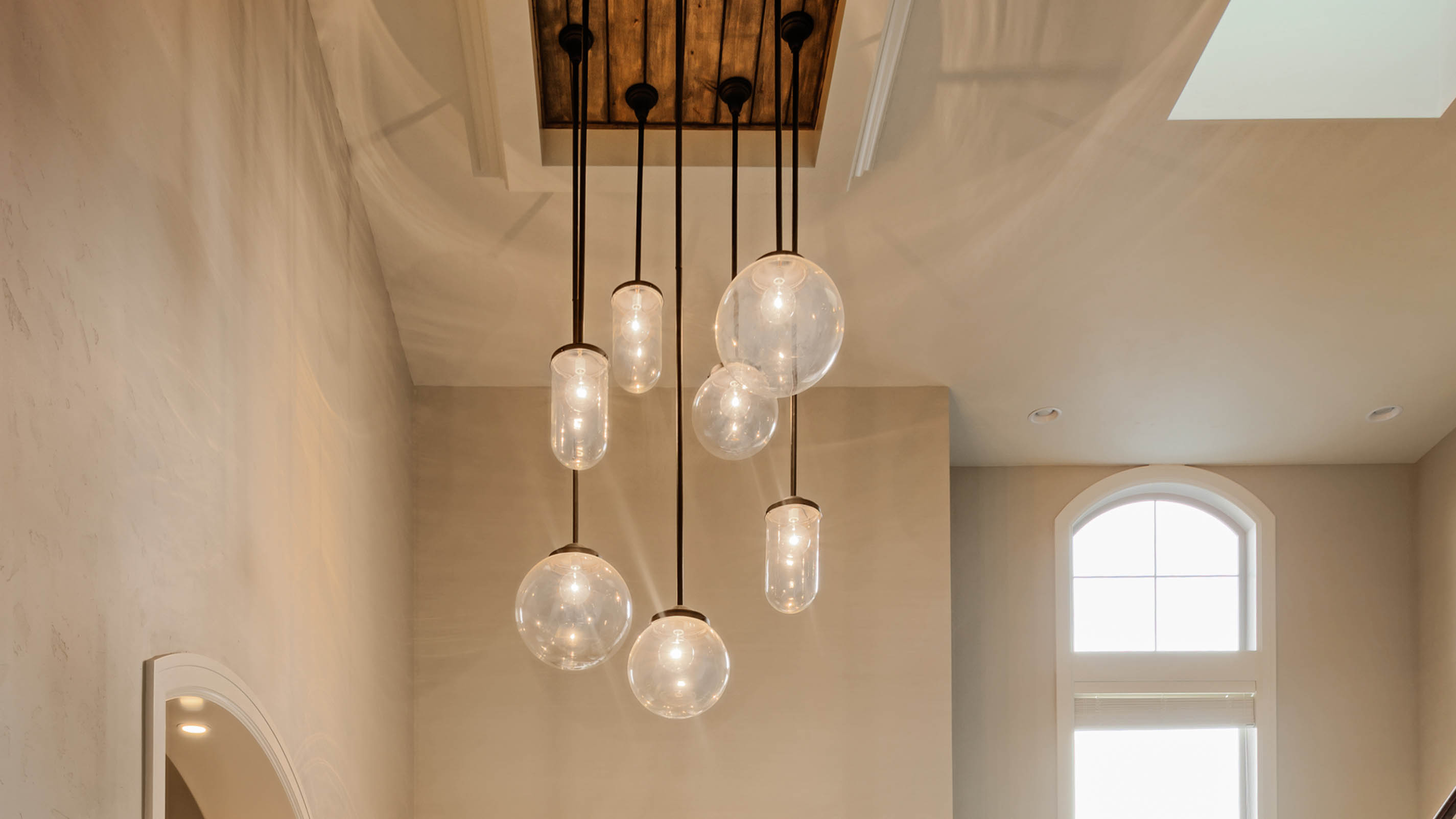
With limited space in an entryway to create a focal point, think upwards. Beautiful pendant lighting can provide a stunning focal point without taking up much-needed ground space. The lighting style you choose will depend on what type of look you are going for. A minimalist style will suit a contemporary space, while a decorative pendant will look perfect in an eclectic or traditional setting.
I particularly like Pooky Lighting, a U.K.-based company entering the U.S. market this year. They have a range of pendants, chandeliers, wall-mounted lights and table lamps, all perfect to bring focus to your entryway.
5. Create space with a console table
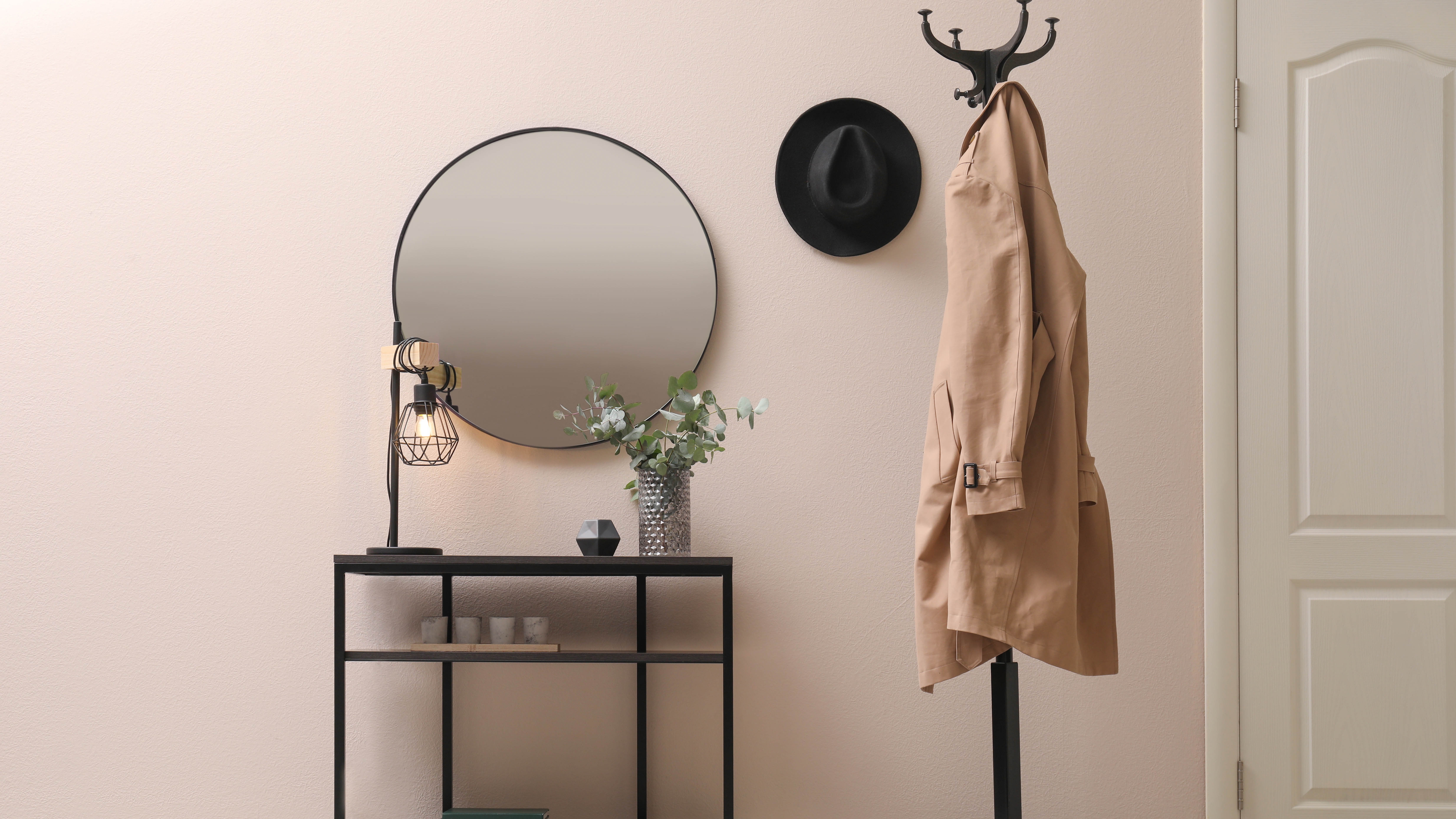
A neat console table can provide a place for keys and mail, with a table lamp to add soft ambient lighting, particularly effective in the darker evenings. But when space is tight, it needs to be practical without the bulk.
One option is to fit a wall-mounted table, leaving the floor space free and creating an illusion of space. A demilune table is one option, as the curved lines of the half-moon-shaped table top are safer in a small space than angular edges. They tend to be on the elaborate side, and some are quite pricey, but they’ll certainly add some bling to your entryway. However, contemporary versions, such as the Applonia Solid Wood Console Table ($207, Wayfair), are available.
Another clever purchase is a console table with small drawers and a lower shelf. Miscellaneous items can be stored away in the drawers, eliminating clutter, while shoes can be placed in boxes on the shelf. The Laguna Nigel Fluted Wooden Console table has drawers and a lower shelf ($300, Target).
6. Make room for coats and shoes
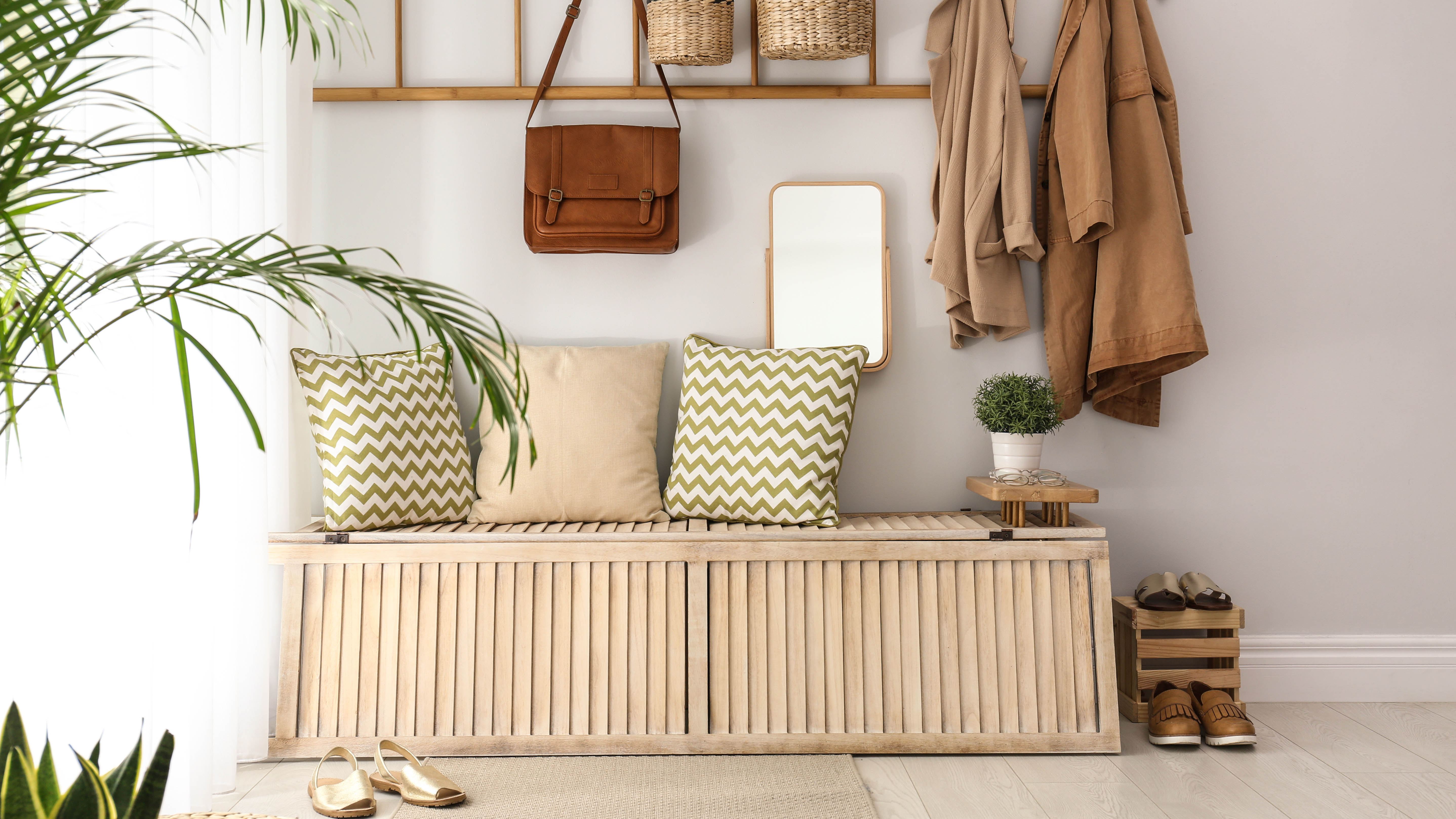
Apart from a console table, a place for coats and shoes should be included in the plan. And although you may store your items elsewhere in your home, perhaps you have an understairs cupboard, it’s worth finding a place in your entryway to keep your guests' items.
We love multi-functional storage in small spaces, and shoe storage that doubles up as a seat is one of our favourites. Shoes can be neatly stashed away while providing a seat to take them on and off, giving your guests some dignity. However, if you don’t have the depth of space to accommodate a shoe bench, other shoe storage ideas can double to provide a space on top for keys and a few decorative items. The Hemnes shoe cabinet contains four compartments and a narrow shelf to store other items ($179, Ikea).
If space doesn’t allow for a coat cupboard, many beautiful hanging solutions exist. Staying with the multi-functional theme, the Raitsa 9-Hook Wall Mounted Coat Rack, available in white, black and espresso, provides hooks for coats and shelving to store and display items ($158, Wayfair).
7. Go practical with flooring
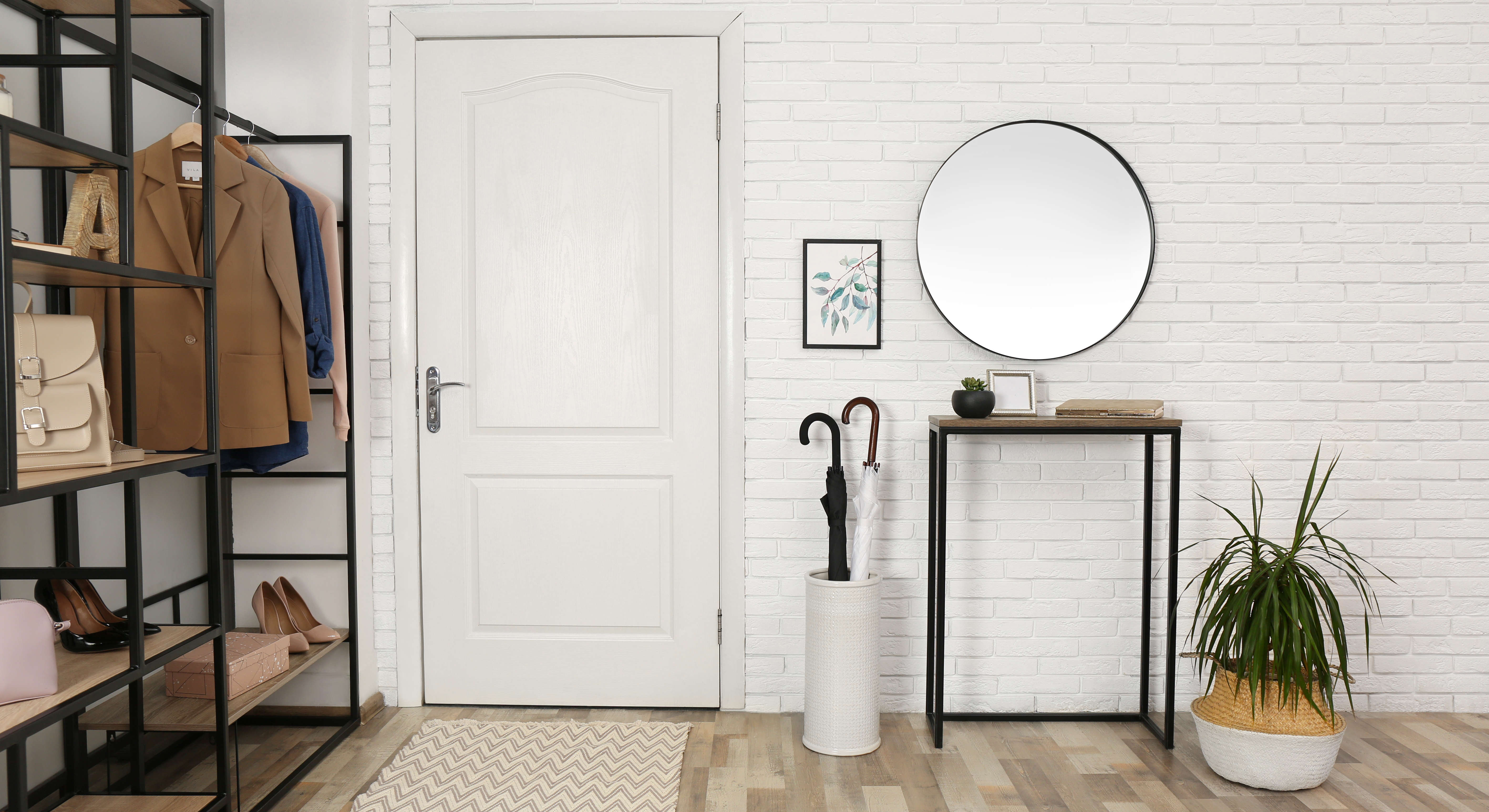
An entryway sees a lot of footfall, and depending on your household's hobbies, it could see more mud than most. So before opting for any floor that takes your fancy, consider how much wear it will endure and how easy it will be to clean.
A wooden floor will look beautiful, but will you be able to keep your wooden floor scratch free? Whereas, tiles are hard-wearing and can act as the main focal point, especially if laid in a pattern. Carpet is often impractical as it is difficult to keep clean, but laying a rug is a compromise as it will soften the space and be easier to clean or replace.
A place for a mat
It's a good idea to place a mat in a entryway to prevent dirt from being trodden into your home. However, they do have a tendency to slip. If laying new flooring, consider having a footwell fitted that will sit slightly below the floor level. This will allow a mat to fit flush, while staying put in the mat well.
8. Treat the walls
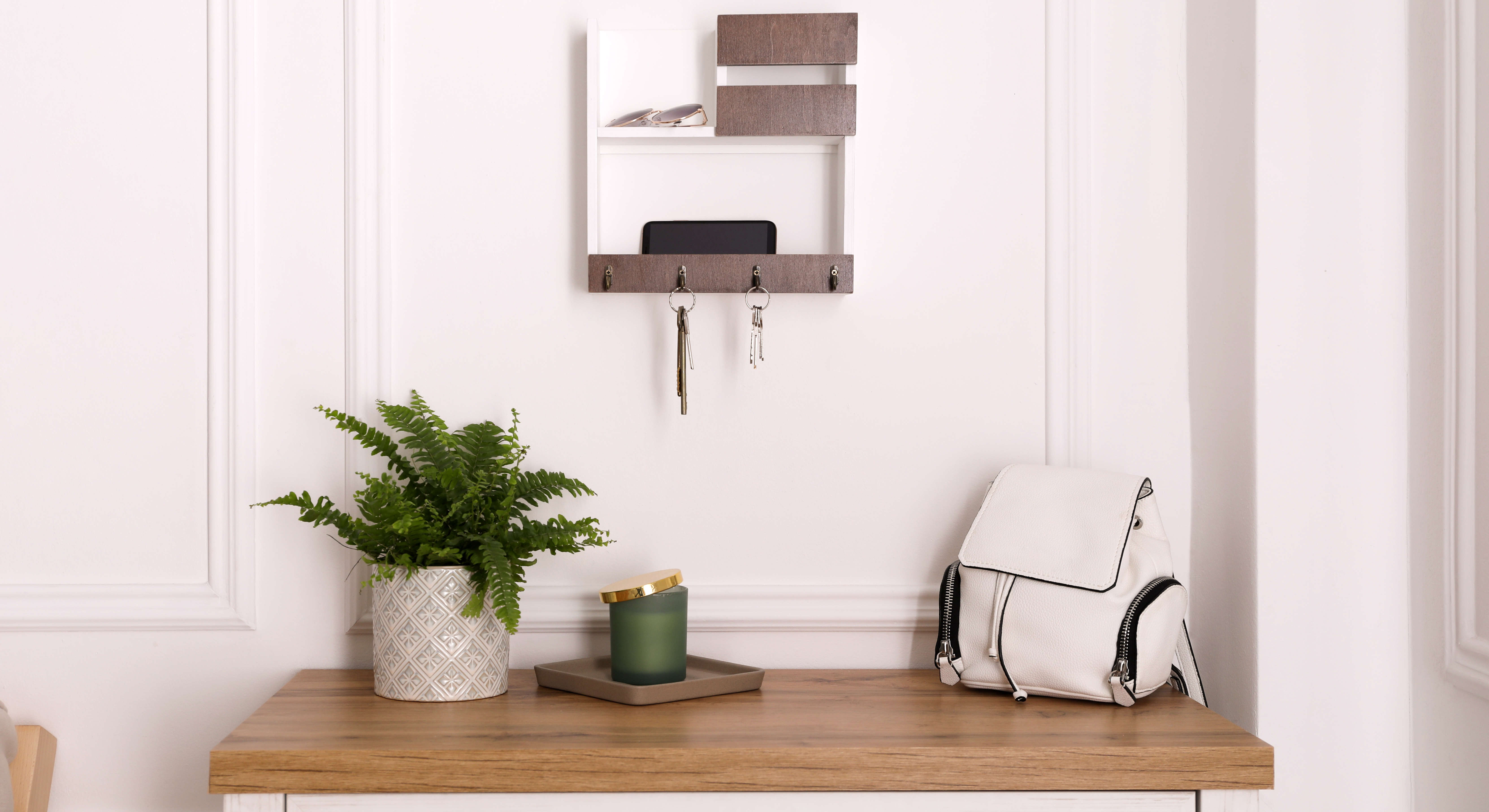
Getting the color right in a small space can be tricky, but it will depend on how much natural light your space gains. If natural light is limited, going for a dark color might turn your entryway into a gloomy cave, so you’d be best to choose a light-reflecting shade.
Tikkurila says that as a hallway receives very little natural light, the best paint colours are off-white hues and muted neutrals, which will bounce light around and ensure your space doesn’t feel overwhelmed. And plain painted walls needn't be bland. They can be given a boost by adding panelling to add more interest.
You also need to consider wear and tear. Entryways are busy spaces with lots of hustle and bustle. Walls can quickly become marked and scratched, making a hard-wearing, wipeable paint a good option.
Matt or flat paint provides a smooth appearance that can hide blemishes, but it can be less durable than others. Eggshell is more suitable for hallways than matt paint as it’s more resistant to stains and scuffs, but it's more difficult to touch up than satin paint. As its name suggests, satin paint has a sheen and works well in hard-wearing areas as it’s durable and stands up to regular cleaning, making it ideal for a hallway.
Despite an entryway being a busy thoroughfare, I took the brave step and opted for a wallpaper. My walls feature Laura Ashley's Josette wallpaper in White/Dove Gray ($80, Laura Ashley), which suits the style of my period house. Although I’m happy with the quality of the paper, it becomes scuffed much more easily than other wallpapers in rooms with less footfall. But, I'm happy to pay the price, as I love the paper so much. In fact, it's on its second round!
So, don't feel you have to choose a paint because it's more hardwearing than wallpaper. But if you go for a wallpaper, just be prepared that it won't wear as well.
9. Finish with a flourish
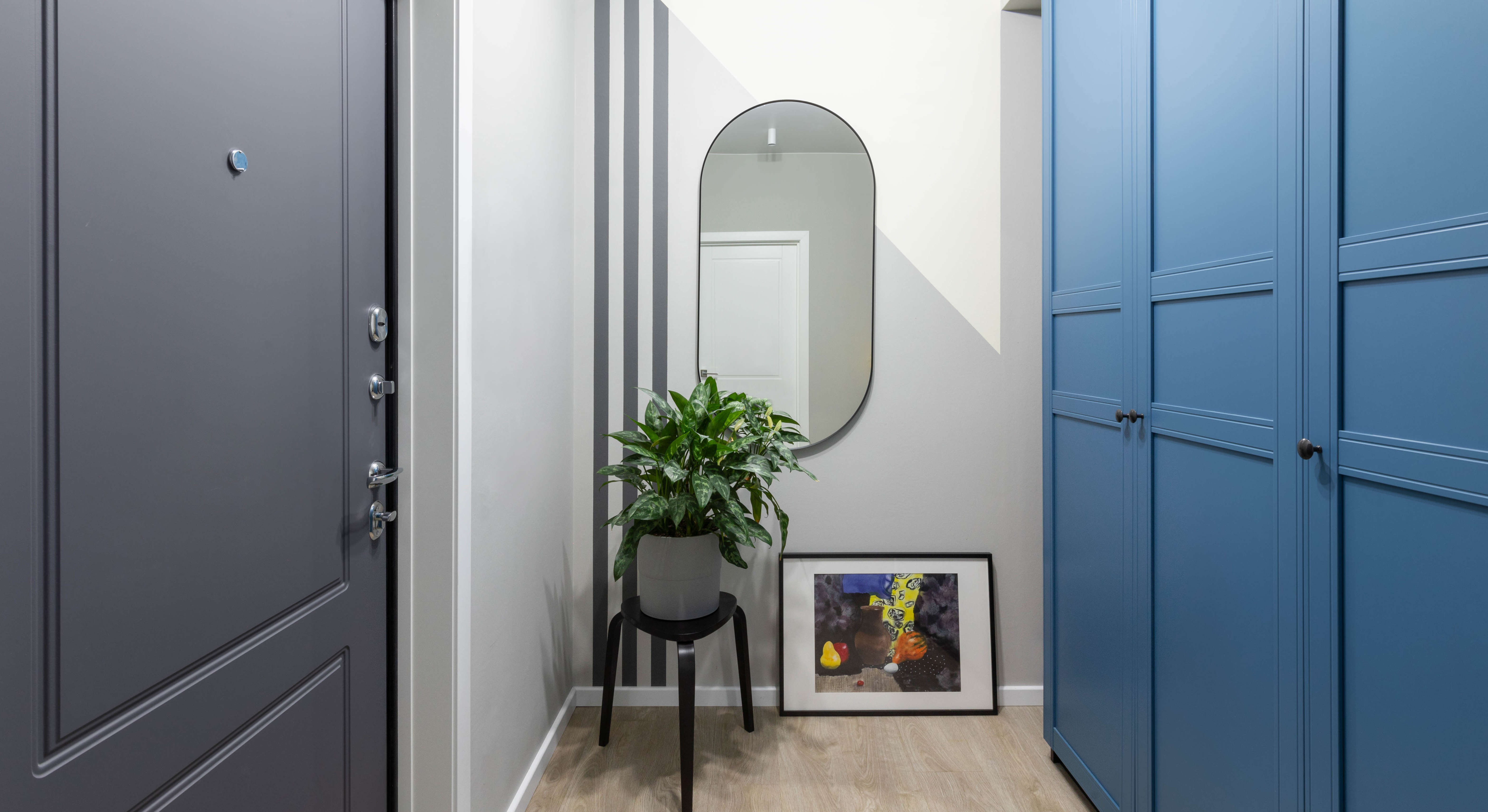
Although we’ve suggested that a small entryway looks best if it is clutter-free, there’s still freedom to add accessories. These items add personality to your home and make it welcoming.
Choose a quirky piece of art that becomes the focal point, an elegant table lamp, and decorative boxes to hide away keys. We like the Roden 2 Piece Handmade Decorate Box Set ($84, Wayfair).
Indoor plants can also add a shot of vibrant green to your scheme, but be mindful of choosing plants that can survive without sunlight, especially if your hallway is on the dark side.







